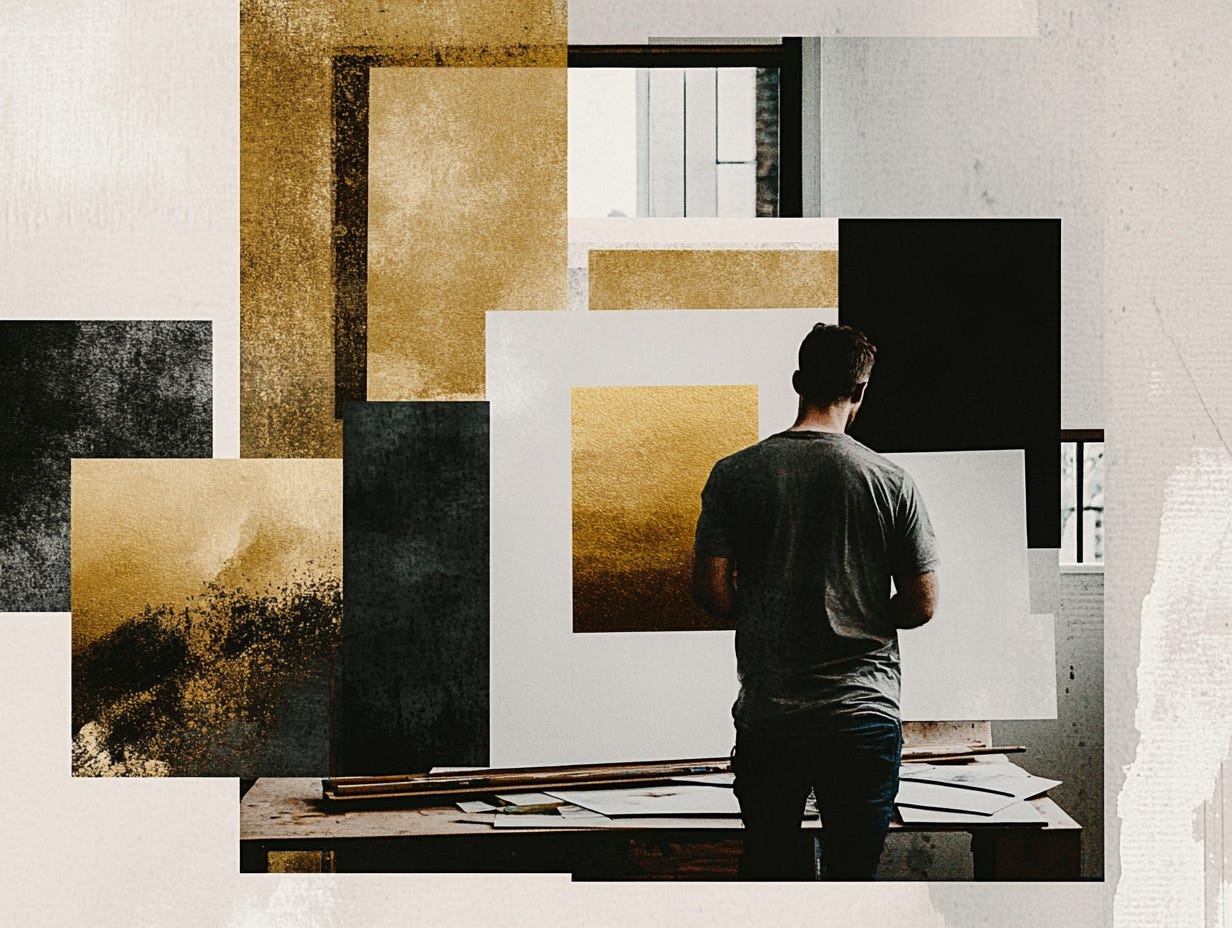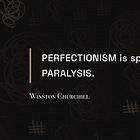10 Practical Lessons for Becoming a Prolific Creator
Actionable strategies to boost your creative output.
Welcome to Unknown Arts, where we explore the creative power of art and technology. Ready to forge ahead into the unknown? Join the journey!
In 2014, at age 24, I faced a crossroads in my musical journey.
After years of performing others' music in choirs, acappella groups, and musical theater, I found myself without a creative outlet.
I wanted to write my own songs, but the nebulous goal of "get good at songwriting" wasn't going to get me anywhere. I needed some structure to get going before I could get good.
So, I set myself a challenge: write 25 songs in 25 weeks before my 25th birthday. Each week, I'd write a new song, record a simple performance, and upload it to YouTube.
Did I become a YouTube star? No. But I learned more about songwriting in those 25 weeks than I had in years of performing.
By embracing quantity, and putting in the work every week, I accelerated my growth and laid a new foundation for my musical skills.
That experience didn't just teach me about music, it taught me a valuable lesson I've applied to all of my creative pursuits since: becoming prolific is key to creative growth.
Here are ten practical lessons I've learned about boosting creative output, each backed by the practices of successful creatives:
1. Create daily, even if it's just for 15 minutes
Creativity thrives on consistency.
Like a spoken language, it needs regular practice to grow stronger and more fluent.
Julia Cameron's "Morning Pages" technique exemplifies this principle perfectly. She advocates writing three pages longhand every morning, casting aside the quality of the content. The focus is on clearing your mind and making space for new ideas.
This daily practice increases your creative fluency over time. As you practice daily, you'll find your ideas flow more easily and your ability to express them improves.
By showing up every day, even for just 15 minutes, you'll build momentum, improve your skills, and watch your creativity flourish.
Your challenge: Set a 15-minute timer and create something, anything, right now.
2. Build a routine around your peak creative hours
We all have a unique internal clock that governs our energy and focus.
The key is to identify and leverage your most productive hours.
Ernest Hemingway wrote every morning at first light. "There is no one to disturb you and it is cool or cold and you come to your work and warm as you write," he explained. In contrast, night owl Franz Kafka found his creative spark ignited in the late hours, often writing through the night.
Pay attention to when you feel most alert.
Once identified, guard these peak creative hours fiercely and structure your day to maximize this golden time for your creative pursuits.
Your challenge: Identify your most productive hours and schedule your next creative session during that time.
3. Design your environment to make creating easier than procrastinating
Willpower alone won't cut it.
Instead, design your environment to make creativity the path of least resistance.
Maya Angelou rented a small, sparsely furnished hotel room to support her focus and workflow. “I keep a hotel room in which I do my work—a tiny, mean room with just a bed, and sometimes, if I can find it, a face basin. I keep a dictionary, a Bible, a deck of cards and a bottle of sherry in the room,” Angelou told Claudia Tate in a 1983 interview.
This dedicated space, free from distractions and with only the necessary tools to create, made it easier for her to focus on her craft. It was like her version of a chef's mise-en-place, with everything she needed to write at her fingertips.
Make it as easy as possible to create on days when your motivation runs low and you’ll be doing just fine.
Your challenge: Rearrange your creative space to remove one obstacle to getting started.
4. Use self-imposed limitations to boost creativity
Constraints can be a powerful catalyst for creativity.
As I mentioned earlier, I challenged myself to write 25 songs in 25 weeks. This self-imposed constraint not only boosted my productivity but also accelerated my growth as a songwriter.
Similarly, Dr. Seuss wrote "Green Eggs and Ham" using only 50 unique words on a bet with his publisher. This severe limitation forced him to be creative with his language choices, resulting in a beloved classic.
These self-imposed limitations act as forcing functions, reducing the scope of possibilities and pushing you into action. You might be surprised at how effective they are at sparking new ideas!
Your challenge: Set a constraint for your next creative session (time limit, materials, theme, etc.).
5. Externalize your idea before critiquing it
Ideas in our heads often feel precious and personal, making them difficult to evaluate objectively.
Pixar's "Braintrust" meetings embody this principle perfectly. As described by Ed Catmull in "Creativity, Inc.," filmmakers present their unfinished work for candid feedback, externalizing their ideas early and often. This process allows for course corrections and improvements long before a film is complete.
Creating a tangible "thing" – a rough draft, a sketch, or a prototype – helps others help you. This externalization creates a healthy distance between you and your idea, opening the door for better collaboration and iteration.
Your challenge: Share a rough draft with someone for feedback.
6. Create for the feedback loop
Every creation is a stepping stone to the next. Your goal should be to get to the next iteration quickly, and for that, you need feedback.
Stand-up comedians are masters of this principle. They don't perfect their jokes in isolation. Instead, they test raw material in small clubs, gauging audience reactions night after night. A comedian might tell the same joke dozens of times, tweaking the wording, timing, and delivery based on how crowds respond.
This rapid feedback loop allows for quick iterations. What works is kept and refined. What falls flat is either improved or discarded. By the time a joke makes it into a major special, it's been honed through countless performances.
Check out this YouTube Short of Mark Normand gradually refining a joke for his set.
Your challenge: Identify one way to get faster feedback on your work.
7. Become an intentional content consumer
To create better, you need to consume smarter.
Austin Kleon, author of "Steal Like an Artist," emphasizes the importance of curating your influences. He suggests keeping a "swipe file" of inspirations and ideas that resonate with you.
“Keep a swipe file. It’s just what it sounds like—a file to keep track of the stuff you’ve swiped from others. It can be digital or analog—it doesn’t matter what form it takes as long as it works… See something worth stealing? Put it into the swipe file. Need a little inspiration? Open up the swipe file.”
I do this in Notion to support my writing. I curate videos, articles, books, quotes, and more. Anything that inspires me!
This process of collecting and revisiting ideas that interest you is critical for fueling your creative output
Your challenge: Start a "swipe file" of inspirations (digital or physical).
8. Combine ideas from different fields for fresh perspectives
Steve Jobs famously said, "Creativity is just connecting things."
His groundbreaking work at Apple often came from combining insights from seemingly unrelated fields, like calligraphy and personal computing.
As Maria Popova, creator of The Marginalian, puts it, "Creativity is combinatorial… we create by taking existing pieces of inspiration, knowledge, skill and insight that we gather over the course of our lives and recombining them into incredible new creations.”
So don't limit yourself to one discipline.
Explore widely and look for concepts you can apply back to your specialty.
That's where the magic happens.
Your challenge: Read an article or watch a video from a field unrelated to your creative work.
9. Batch similar tasks to maintain creative flow
Switching between different types of tasks can be a real creativity killer.
Each time you shift gears, you're forcing your brain to recalibrate, which eats up time and mental energy.
That's where task batching comes in. By grouping similar activities together, you can dive deep into a specific mode and stay there, riding the wave of your creative flow.
Consider how prolific YouTubers work. Many, like Ali Abdaal, batch their content creation. They might film several videos in one day, then spend another day editing, and another on thumbnails and titles. This method allows them to stay in a consistent mindset and increase their output.
The key is to identify the different modes in your creative process and then schedule dedicated time for each. By doing so, you'll find yourself getting into the zone more easily and staying there longer.
Your challenge: Identify tasks you can batch together in your creative process and schedule a "batch day" this week.
10. Celebrate small wins to build momentum
In the pursuit of big goals, it's easy to overlook the small victories along the way.
Jerry Seinfeld's famous "don't break the chain" method, where he marks a calendar for each day he writes, is a perfect example of celebrating small wins.
This visual reminder of progress can be incredibly motivating.
By acknowledging and celebrating these small steps forward, you'll build the confidence and motivation to keep pushing your creative boundaries.
Your challenge: Create a visual tracker for your daily creative practice.
Final Thoughts
Becoming prolific isn't about creating masterpieces every day.
It's about showing up, doing the work, and trusting the process.
As Picasso said, "Inspiration exists, but it has to find you working."
So keep creating, keep learning, and watch as your creative output – and its quality – grow exponentially.
Until next time,
Patrick
If you got a little value from this post, consider subscribing or sharing. Follow me on X, Threads, or LinkedIn for more.






